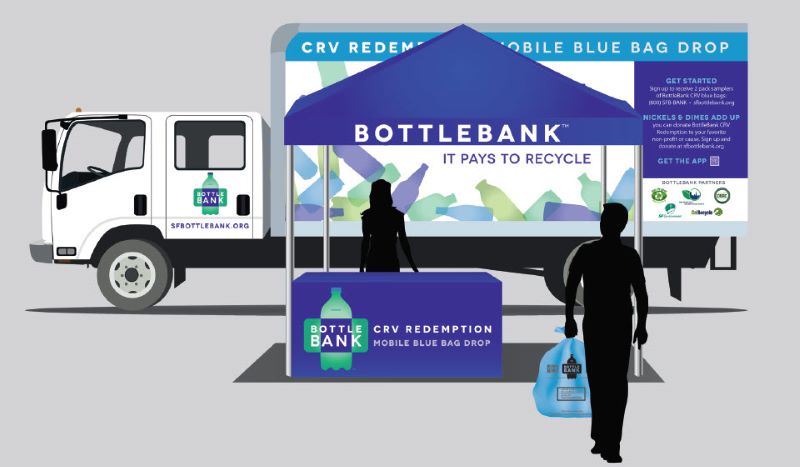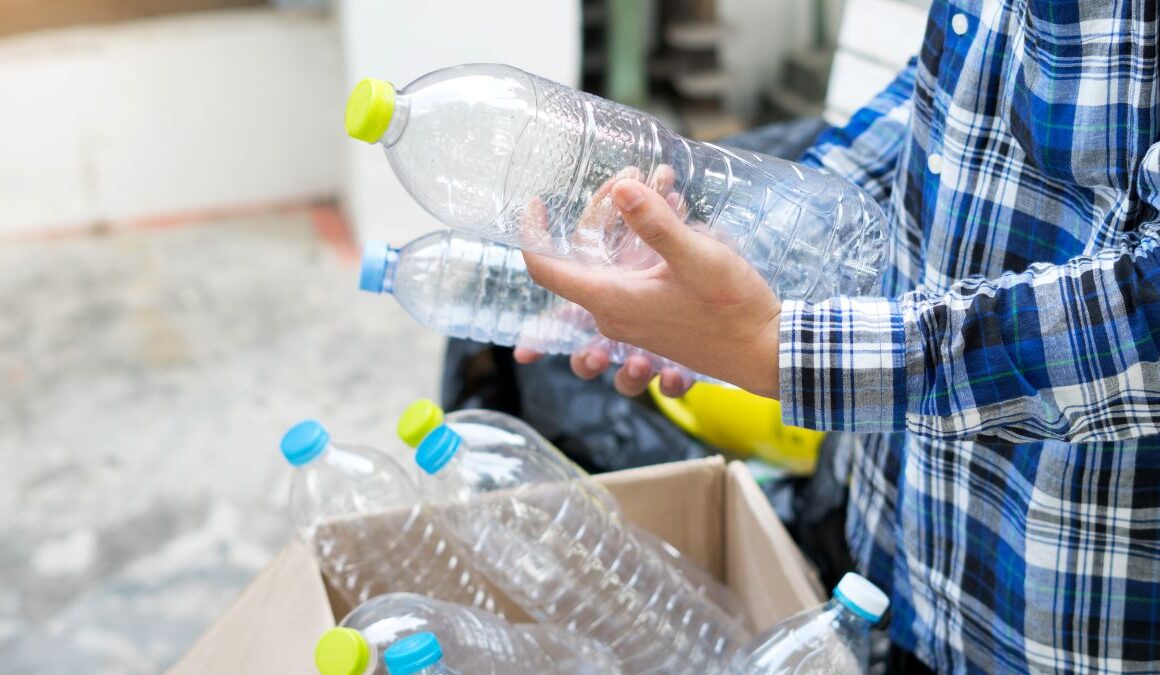Can San Francisco’s BottleBank Save Recycling?
Local governments trying to increase their recycling rates use a lot of strategies: recycling mandates, embedding the cost of recycling in garbage services, or banning recyclables from the garbage. Although container deposit laws are not widely used, they may be effective. Commonly called bottle bills, these laws allow consumers who return their bottles for recycling to receive a cash reward. Now San Francisco is trying to leverage California’s deposit return law to boost a slipping recycling rate.
Bottle Bills
Most bottle bills date back to the late 1970s and early 1980s when recycling was still a novel concept and eliminating litter was as much a goal as waste reduction. Today, only 10 states (and Guam) have a bottle bill: California, Connecticut, Hawaii, Iowa, Maine, Massachusetts, Michigan, New York, Oregon, and Vermont. Details like types of container and redemption values vary by state. But they generally work the same way. A small deposit (usually 5 or 10 cents) is added to the price of each beverage. When a consumer returns the empty container – usually to a recycling center but sometimes to the retailer – they receive the deposit amount.
Most of the states with bottle bills have higher than 50% return rates for eligible containers. According to the Container Recycling Institute, in 2018 in states with deposit systems, average recycling rates were 62% for PET bottles, 64% for glass bottles, and 77% for aluminum beverage cans. By comparison, the national averages for these materials are 28%, 40%, and 46% respectively. This shows that deposit systems can work. There doesn’t appear to be data directly comparing the effectiveness of deposit systems, curbside collection, and a hybrid approach in which consumers can use curbside recycling or redeem their deposits. One advantage of deposit systems is that separating beverage containers at the source keeps the materials cleaner, which makes the recycling process more efficient. However, separating out redeemable containers can undermine the financial viability of curbside recycling for less valuable recyclables.
California’s Problem
California has had a bottle bill since 1986 and boasts some of the highest recycling rates in the country. But the Chinese import ban and other economic factors like cheap oil for manufacturing virgin plastic have reduced the value of recyclables as commodities in recent years. Economic pressure has caused many recycling centers in California (and elsewhere) to close.
California law requires beverage retailers located more than a half-mile from a recycling center to either pay the redemption or a $100/day fine. It might seem more convenient to return containers to the store the next time you go shopping than to make a special trip to a recycling center. But many retailers opt to pay the fine rather than deal with returned containers, and it’s not always obvious to consumers which retailers are which. As it has become harder for residents to collect the deposit, beverage container recycling has dropped below 80% in California for the first time since 2008. That has environmentalists and legislators scrambling for a solution.

BottleBank
San Francisco has mandatory curbside recycling, which means that most residents have an alternative to throwing bottles in the garbage. But nearly all of San Francisco’s recycling centers have closed. This has made it difficult for residents to collect their bottle deposits. The city is banking on mobile recycling centers with a newly launched pilot program.
Called BottleBank, the program requires residents to sign up online or download an app to create an account. They must place their uncrushed, unsorted beverage containers in special bar-coded blue bags, available at grocery stores. They take the bags to any open drop-off location. BottleBank trucks will rotate among drop-off locations in parking lots at schools, churches, and community centers throughout the city. At the mobile recycling center, the bags are scanned and emptied into a sorting machine. The machine counts the redeemable containers in the bag and calculates the refund amount. That amount is deposited electronically in the consumer’s Venmo, PayPal, or bank account within 72 hours.
Will It Work?
A white paper on deposit return systems identified 12 elements that mark the most successful systems. The city can’t control the scope of the bottle bill – the types of redeemable containers and the deposit amounts. BottleBank primarily addresses the element of convenient redemption options. This has been the sticking point for San Francisco in recent years.
BottleBank began operations on January 5, 2022, so it’s too soon for any data on how well the program performs. But the program is based on Oregon’s successful BottleDrop system, so the city has reason to hope that it will ease the burden on small grocery stores and make it easier for low-income residents and residents without access to convenient transportation to redeem their deposits.


